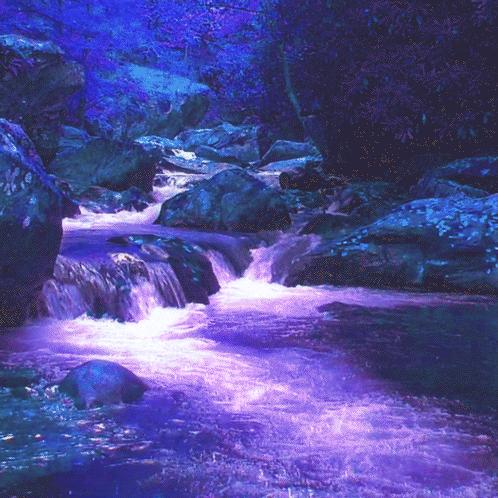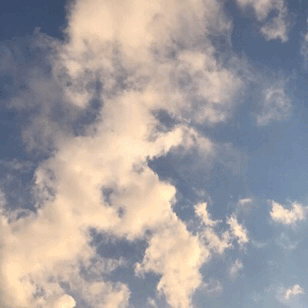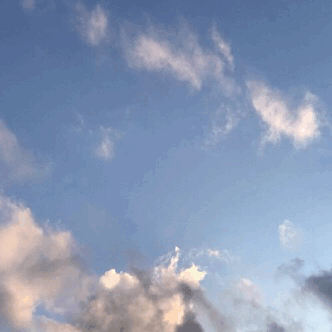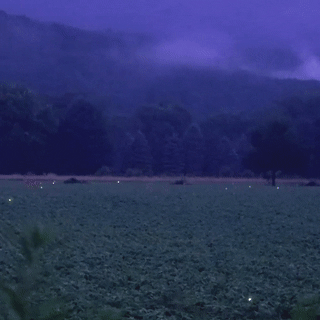Benjamin Everett
Monthly Archives: February 2024
Photo

Photo

world-beauty: The Bubble Credits: Ken Crawford
Heckathorn-Fesen-Gull 1, a planetary nebula // ERIC BONNEVILLE
Heckathorn-Fesen-Gull 1, a planetary nebula // ERIC BONNEVILLE
slave2freedom: Sun Ra by Jacob V Joycewww.jacobvjoyce.com
saucerkommand: Sun Ra, There Are Other Worlds (They Have Not…
The Strangelings, Lucy Feng



The Strangelings, Lucy Feng
gradienty: Coral Red Gulf Blue (#fb3141 to #01115e)
Dua Saleh, Rosetta EP, 2020

Dua Saleh, Rosetta EP, 2020
Spider-Punk Arms Race #1 Olivier Coipel Variant 2024

Spider-Punk Arms Race #1 Olivier Coipel Variant 2024
thewindowofthesummerhouse: Garis Edelweiss
radicallyretro: Earth vs. the Flying Saucers Movie…
rastronomicals: 2:33 PM EST February 24, 2024: Funkadelic -…

2:33 PM EST February 24, 2024:Funkadelic - “Cosmic Slop”
From the compilation album Heavy Soul Vol. 2
(February 14, 2020)Last song scrobbled from iTunes at Last.fm
Giveaway with the April 2020 issue of Mojo
Bridget Riley, Climax, 1962
Bridget Riley, Climax, 1962
cosmic-diaspora: The Heliocentrics – “The Zero Hour”
Rectangular log map-scheme of the Observable Universe by Pablo Carlos Budassi
Rectangular log map-scheme of the Observable Universe by Pablo Carlos Budassi
hologramhomocide: Sun Ra
Photo

Photo

Photo

Photo

Sh2-308: The Dolphin-Head Nebula
Sh2-308: The Dolphin-Head Nebula
flodaya: Joy Sunday as Bianca Barclay in ‘Wednesday’ (2022)
NGC 2736, Pencil Nebula
NGC 2736, Pencil Nebula
Bootsy Collins

Bootsy Collins
At the Mountains of Madness
At the Mountains of Madness
70sscifiart: Steven Vincent Johnson, Greetings, 1979
clearslime:❥ | dianalehr on ig
Jurell Cayetano
Jurell Cayetano
Carina Nebula
Astronomy often uses artists impressions to attempt to capture what something we couldn’t possibly see, may look like. It has it’s faults and can be misleading at times, but while the above looks like such a thing, it’s actually an image taken by a back garden telescope around $1000 and some filters and photoshop palette adjustments.
That may sound like it’s cheating a little, but it’s an important part of trying to highlight areas of interest, which otherwise would be not so apparent.
For more info on how it was made
https://www.astrobin.com/8ap2rm
The Carina Nebula is one of the most beautiful parts of the night sky, with Eta Carina once being one of the brightest stars in our night sky in the 1830s, but if you see it now, you’ll understand why it’s not so bright.
An outburst of matter has concealed it somewhat, although over time it has slowly began to brighten up.
This star periodically blows off huge amounts of matter from it’s atmosphere, and will eventually go supernova having previously been a blue giant, and moved to a Wolf Rayet phase we see today.
Osborne Macharia Spans Geologic Phenomenon and Beauty in ‘Daughters of the Rift’
Staggering Swirls in Spiral Galaxies l Webb
Staggering Swirls in Spiral Galaxies l Webb
l 19 nearby face-on spiral galaxies in near-& mid-infrared light
Sun Waves
Sun Waves
art: Psychedelistan
Photo

SAUCERKOMMAND 2024-02-24 23:26:30
Photo

onenicebugperday: Spiny flower mantis (captive pet),…
Photo

Rich.
Rich.
SAUCERKOMMAND 2024-02-24 12:52:59
sea, swallow me
sea, swallow me
psikonauti:Romuald Hazoumè (Beninese, b. 1962)Ibedji Ade, 2014
Romuald Hazoumè (Beninese, b. 1962)
Ibedji Ade, 2014
Thorolf Holmboe (Norwegian, 1866–1935) – Phalacrocoarax aristotelis in midnight sun
Thorolf Holmboe (Norwegian, 1866–1935) - Phalacrocoarax aristotelis in midnight sun
Photo

aquariumdrunkard: OP Magazine, early 1980s
magictransistor: Richard Colvaen
v-a-p-o-r-s-m-u-t: Masoud Yasami
ascension, artist: cocoeze_ on twitter
ascension, artist: cocoeze_ on twitter
Photo

SAUCERKOMMAND 2024-02-22 16:26:17
Nothing Was The Same.
Nothing Was The Same.
SAUCERKOMMAND 2024-02-22 11:42:41
chimericalcynosure: By Taj Francis
SAUCERKOMMAND 2024-02-22 10:00:44
Photo



hrianlebutson:Digable Planets – Pacifics
Photo

Spaceships by John Berkey, Eddie Jones, and Bruce Pennington.
Spaceships by John Berkey, Eddie Jones, and Bruce Pennington.
Paul Klee
Paul Klee
The Limits of Reason 1927
oil, watercolor and pencil on canvas tempera
56.44 cm × 41.50 cm
psikonauti: Vladimir Tretchikoff (Russian,1913-2006)Ndebele womanOil on canvas
Vladimir Tretchikoff (Russian,1913-2006)
Ndebele woman
Oil on canvas
Photo

rastronomicals: 3:14 PM EST February 20, 2024: Sons of Kemet -…

3:14 PM EST February 20, 2024:Sons of Kemet - “My Queen Is Albertina Sisulu”
From the album Your Queen Is a Reptile
( March 30, 2018)Last song scrobbled from iTunes at Last.fm
File under: New British Jazz
Photo

loathsome-transexual: This song is pretty damn good.
MF Doom, Count Bass D & MF Grimm by Danlish
MF Doom, Count Bass D & MF Grimm by Danlish
manzel bowman

manzel bowman
Distributed Points – 240212
Distributed Points - 240212
Vivica by Mikayla Miller for Blanc Magazine Issue 25
Vivica by Mikayla Miller for Blanc Magazine Issue 25
SAUCERKOMMAND 2024-02-19 20:11:49
Photo

Siamese gods, Michael Tella

Siamese gods, Michael Tella
color-palettes: Glory to Team Aqua!- Submitted by…

Glory to Team Aqua!- Submitted by Sp1derC1der
#133D55 #3870A5 #59A5D7 #84D2F6 #92E5F7
Photo

saucerkommand: Sun Ra and his Intergalactic Research…
alcrego: Breathing Machine
flight-to-mars:
Ndidi Emefiele — An Audience (mixed media on canvas, 2018)
Ndidi Emefiele — An Audience (mixed media on canvas, 2018)
mentaltimetraveller: Johannes Wohnseifer
Robin F. Williams (American, 1984) – Eye on the Time (2018)
Robin F. Williams (American, 1984) - Eye on the Time (2018)
photography by Richard Misrach
photography by Richard Misrach
just–space: Moon Shadow on Jupiter : What is that large…

Moon Shadow on Jupiter : What is that large dark spot on Jupiter? It’s the shadow of Io, one of Jupiter’s largest moons. When Jupiter’s moons cross between the Jovian giant and the Sun, they created shadows just like when the Earth’s moon crosses between the Earth and the Sun. Also like on Earth, if you were in a dark shadow on Jupiter, you would see a moon completely eclipse the Sun. Unlike on Earth, moon shadows occur most days on Jupiter – what’s more unusual is that a spacecraft was close enough to record one with a high-resolution image. That spacecraft, Juno, was passing so close to Jupiter in late February that nearby clouds and the dark eclipse shadow appear relatively large. Juno has made many discoveries about our Solar System’s largest planet, including, recently, rapidly expanding circular auroras. via NASA
mudwerks: Donyale Luna – a previously unpublished image from an…

Donyale Luna - a previously unpublished image from an American Vogue shoot 1968-69
© Luigi Cazzaniga
Photo

SAUCERKOMMAND 2024-02-16 21:18:53
wanderingandactingout: Ayana V. Jackson, Seeking The Source Of…
For All Mankind: Season 4 – Ranger 1 Alternate Designs Concept Art by Sean Hargreaves
For All Mankind: Season 4 - Ranger 1 Alternate Designs Concept Art by Sean Hargreaves
the water witch.
the water witch.
Photo

just some beautiful and dangerous sea witch I painted in 2022 for Ghostfire Gaming “Fables” project
just some beautiful and dangerous sea witch I painted in 2022 for Ghostfire Gaming “Fables” project
stephenmolyneaux
arsuf: SABLE (2021)
Photo

@ Neptunueous

@ Neptunueous
Photo


gradienty: French Pass Rice Flower (#aaecfc to #f3fee6)
“Kheris Rogers” by A.J. Alper
"Kheris Rogers" by A.J. Alper
Photo

SAUCERKOMMAND 2024-02-14 08:31:52
Chloe Le Drezen for M Le Magazine du Monde February 2023

Chloe Le Drezen for M Le Magazine du Monde February 2023








































































































